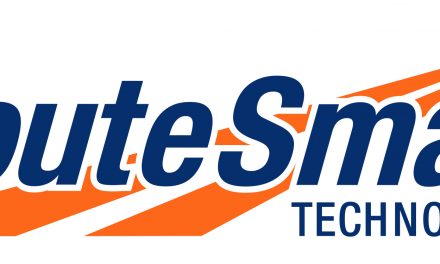
Optimising Routes to Meet Critical Delivery Windows

Jason Fry, Senior Business Development Manager, RouteSmart Technologies, shares the key to satisfying Same-and Next-Day delivery demands.
“Efficient route planning and optimisation have become indispensable tools for logistics and delivery services. At RouteSmart Technologies, we recognise the profound impact of advanced route optimisation on fulfilling these critical delivery windows and enhancing overall operational efficiency for parcel and postal organisations.
The Rise of Same-Day and Next-Day Delivery
Consumer demand for rapid delivery is at an all-time high, reshaping the logistics landscape and pushing companies to dramatically reduce delivery times. According to a comprehensive survey conducted by Retail Dive, an impressive 42 % of American shoppers plan to spend more online in 2024, with a significant portion explicitly prioritising faster delivery options as a key factor in their purchasing decisions. This trend is not just limited to particular demographics or regions; it spans across a wide spectrum of consumers, highlighting a universal shift in shopping behaviors.
Moreover, the expectations for quick deliveries are becoming more stringent. Approximately 40 percent of U.S. consumers now expect their online purchases to arrive within two to three days, setting a new standard for what constitutes prompt delivery. This expectation not only underscores the necessity for efficient delivery operations but also indicates a pivotal shift in consumer patience and demand fulfillment. Retailers and logistics providers are thus compelled to enhance their supply chain agility to meet these expectations without compromising the quality of service.
The urgency for rapid delivery is further amplified by the competitive dynamics of the market. Companies like Amazon and Walmart are continuously pushing the boundaries of what’s considered fast, often offering same-day or next-day deliveries in many urban areas. This has set a precedent that other retailers are striving to match or exceed, leveraging advanced route planning solutions and technologies to streamline their operations and reduce the time from order to delivery.
As consumer behavior continues to evolve, the pressure on businesses to provide faster and more reliable delivery options will only increase, making it imperative for companies to continuously innovate and improve their delivery processes to stay competitive in this fast-paced market.
The Importance of Meeting Critical Time Windows
Meeting delivery promises is crucial for customer satisfaction. A study by McKinsey & Company found that 90 % of customers consider same-day delivery a significant factor in their purchase decisions. By consistently meeting these critical time windows, businesses can enhance customer loyalty and drive repeat purchases.
In a highly competitive market, offering reliable same-day and next-day delivery can set a business apart. To compete, other businesses must leverage advanced route optimisation to ensure they can meet customer expectations. Efficient route planning reduces fuel consumption, lowers operational costs, and minimises delivery times. This is particularly critical in an era of rising fuel prices and environmental concerns.
Enhanced route planning utilises comprehensive data, including historic traffic patterns and information on planned incidents, to improve the accuracy of delivery time windows. This integration of detailed analytics allows last-mile delivery firms to tighten their delivery windows from broad four-hour slots to more precise one- or two-hour intervals, enhancing customer satisfaction by reducing wait times and increasing delivery efficiency. Such improvements boost operational savings by optimising routes, reducing fuel consumption and strengthening customer trust by providing reliable and consistent delivery times, thereby offering a significant competitive advantage in customer service.
Moreover, accurate optimisation is essential because a single delayed delivery can trigger a domino effect, resulting in a series of late deliveries. Instead of creating an advantage, this can lead to a negative customer experience and potential loss of business.
The last-mile delivery sector has become increasingly competitive, with new entrants and evolving technologies continuously reshaping the landscape. Companies need to stay agile, adapting to these changes to maintain their competitive edge and meet the escalating demands of consumers.
Enhanced Fleet Utilisation
Efficient route planning ensures better utilisation of delivery fleets. This means fewer vehicles can handle more deliveries, reducing the need for additional resources and optimising the existing fleet’s performance. This directly contributes to a lower carbon footprint and operational costs. Optimised routes lead to a balanced workload among drivers, reducing the likelihood of driver fatigue and improving overall safety. In addition, better fleet utilisation extends the lifespan of vehicles by avoiding unnecessary wear and tear, thus reducing maintenance costs.
The strategic routing facilitated by these advanced systems also ensures a balanced workload among drivers. This balance is critical not only for maintaining high levels of driver morale and job satisfaction but also for adhering to regulatory requirements regarding driving hours and rest periods. By preventing over-scheduling and underutilisation, companies can minimise the risk of driver fatigue, which is a major factor in on-road safety. Enhanced safety not only protects drivers and public road users but also reduces the likelihood of costly accidents and insurance claims.
Furthermore, better fleet utilisation significantly extends the lifespan of vehicles. Optimised route plans prevents excessive wear and tear by avoiding unnecessary detours and idling, which can strain vehicle components. Regularly driving optimised routes can reduce the frequency and cost of maintenance, ultimately prolonging the operational life of the fleet.
This optimised approach to fleet management also contributes to environmental sustainability. With fewer vehicles on the road and more efficient routes, the carbon footprint of logistics operations is markedly reduced. This not only helps companies meet increasingly stringent environmental regulations but also appeals to eco-conscious consumers who prefer to do business with environmentally responsible companies.
Improved Delivery Accuracy
Advanced route optimisation technologies incorporate planned and known traffic data and other variables to provide the most accurate and efficient routes. This results in higher delivery accuracy, fewer missed time windows, and increased customer trust.
The implementation of such technologies results in significantly higher delivery accuracy, minimising instances of missed time windows—a key metric in customer satisfaction and retention. Furthermore, these optimisation tools are integrated with customer management systems to further enhance delivery accuracy. By accessing detailed customer preferences and previous delivery data, companies can tailor their service approach to meet specific customer needs, such as preferred delivery times or special handling instructions, thus reducing the likelihood of service failures.
Additionally, route optimisation technologies help in mitigating the impact of unforeseen disruptions such as traffic accidents or severe weather conditions by dynamically rerouting deliveries. This agility ensures that the operational flow is maintained, and customer promises are kept, thereby safeguarding the company’s reputation and customer loyalty.
The improved delivery accuracy facilitated by these advanced technologies does not merely satisfy customers but also contributes to the operational efficiency of businesses. It reduces the need for costly redeliveries and enhances the utilisation of resources, which in turn lowers operational costs and improves profit margins. As businesses continue to face increased demand and heightened expectations, investing in advanced route optimisation technologies is vital for maintaining your competitive edge and ensuring sustainable growth.
How Businesses Can Scale Solutions to Meet Increased Volume
As e-commerce continues to grow, businesses need scalable solutions to handle increased delivery volumes. Efficient route planning systems can adapt to varying demand levels, ensuring that businesses can scale their operations without compromising on delivery speed or accuracy.
When optimising its delivery routes, Smith Brothers Farms achieved a 5.7 percent efficiency gain, saving $200,000 annually. This optimisation reduced travel time and distance, eliminated overtime hours, and decreased the number of trucks needed, all without cutting jobs. The success of this initiative demonstrates how businesses can scale solutions to handle increased delivery volumes, ensuring cost efficiency and improved operational performance. By implementing advanced route planning, companies can effectively manage growth and maintain high service levels.
“It’s important that we deliver a consistent customer experience,” said James Kostoroski, Director of Logistics at Smith Brothers Farms. “We can project delivery times for our customers more effectively with RouteSmart using algorithms and predictive street data that are always being updated.”
Posti Group integrated route planning into its operations to handle variations in daily delivery volumes and improve geographic data quality. The project resulted in significant cost savings, exceeding the targeted 5 % savings per delivery centre. By optimising routes and improving vehicle utilisation, Posti achieved higher service reliability and balanced routes. The initiative demonstrated how businesses can scale solutions to manage increased delivery volumes efficiently, leading to a positive return on investment before the end of the first year.
Mastering Modern Delivery: How Route Optimisation is Shaping the Future of Logistics
The future of delivery logistics lies in leveraging technology to meet the ever-growing demands of consumers. At RouteSmart Technologies, we are committed to providing state-of-the-art route optimisation solutions that help businesses stay competitive and efficient. By embracing advanced route planning, businesses can ensure they meet critical delivery windows, enhance customer satisfaction, and achieve sustainable growth.
The importance of meeting critical time windows cannot be overstated. Efficient route planning and optimisation are not just operational necessities but strategic advantages in today’s fast-paced delivery landscape. By investing in these technologies, businesses can meet consumer expectations, reduce costs, and drive long-term success.”
About Jason
 Jason Fry serves as a Senior Business Development Manager at RouteSmart, where he has crafted route planning and optimisation solutions for clients in the postal/parcel, local delivery, and newspaper industries for more than 16 years. Renowned for his deep expertise in optimising route planning operations, Jason specialises in leveraging RouteSmart Online and Routing as a Service (RaaS) to enhance organisations’ operational efficiencies. Committed to innovation and a forward-thinking mindset, Jason consistently helps organisations tackle their most complex route-planning challenges.
Jason Fry serves as a Senior Business Development Manager at RouteSmart, where he has crafted route planning and optimisation solutions for clients in the postal/parcel, local delivery, and newspaper industries for more than 16 years. Renowned for his deep expertise in optimising route planning operations, Jason specialises in leveraging RouteSmart Online and Routing as a Service (RaaS) to enhance organisations’ operational efficiencies. Committed to innovation and a forward-thinking mindset, Jason consistently helps organisations tackle their most complex route-planning challenges.







